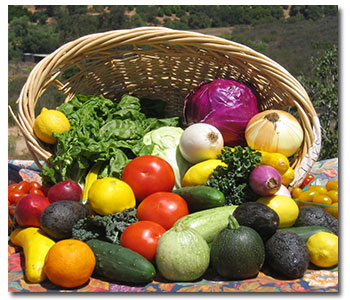Companion Planting – Warm Season Veggies

We have all had experience of meeting someone we instantaneously take a liking (or disliking) to. Most of us have encountered people who have helped us advance on our life’s journey in a positive way. On the flip side, some of us have been involved in what could only be described as a “toxic” relationship.
Turns out, the same interactions take place in the plant world (who knew?). By learning about these relationships (positive and negative), we are able to make the most of our gardening experiences in terms of increasing productivity and plant vigor and reducing the amount of time needed to maintain the garden.
The practice of planting certain varieties together that will provide a benefit or benefits to each other is called “Companion Planting” and has been practiced my Native Americans for as long as they have farmed the land. The most famous example of this is called the “Three Sisters”, which emerged from an Iroquois creation myth. In companion planting, “Three Sisters” means planting corn, beans and squash in close proximity to each other. These plants have a symbiotic relationship in that the corn provides a structure for the beans to climb, the beans (which are one of the few plants that are able to receive nitrogen from the air) provide the soil with nutrients, and the large leaves of the squash shade the soil and helps to conserve water and control the germination of weeds.
Companion planting can help your plants thrive in many ways including insect and weed control, space optimization and providing nutrients to the soil. It fits perfectly with organic gardening practices because, if done correctly it can reduce or eliminate the need for pesticides and herbicides.
Listed below are plants for the warm season garden that provide benefits to each other by being grown together:
See Richard Wrights Guide on companion planting
- Asparagus grows much more vigorously when planted with Parsley
- Tomatoes are much less likely to get white fly, tomato hornworm or aphids when planted in close proximity to Basil. Basil also repels flies and mosquitoes
- Beans will be protected from beetles when planted near Petunias. Beans will grow more vigorously when planted with Summer Savory
- Cucumbers, Potatoes, Corn and Savory require a lot of food and thus benefit from growing near Beans, which require less fertilizer and create their own nitrogen
- Lemon Balm, when planted near Tomatoes, improves the flavor of the fruit
- Plant Nasturtiums near Tomatoes, Cucumbers and Squash. They will repel white fly and squash bugs. They are much more attractive to aphids, so the pests will go there rather than on the other vegetables (called a “trap crop” – i.e. the practice of sacrificing one plant for the benefit of the more desirable plant)
- Planting Garlic around Peach Trees reduces the likelihood of Peach Leaf Curl occurring. It also repels borers when planted near susceptible varieties of fruit trees. If planted near Tomatoes, it deters red spider mite
- Rosemary and Sage increases the vigor of Beans
- Borage increases the yield of Strawberries. It attracts bees to the garden and improves the growth and flavor of Tomatoes and deters tomato hornworm
And now for the “Hate”…here is a list of things that should NOT be planted together:
- Sage and Cucumbers
- Basil and Rue
- Rosemary and Potatoes
- Mint and Parsley
- Garlic and Beans
- Fennel and almost everything (plant near a dog run – it repels fleas)
Try the planting combinations listed above and be rewarded with a more carefree garden this year – it really works!











